The Classification of Movement in Infants for the Autonomous Monitoring of Neurological Development
- PMID: 37430717
- PMCID: PMC10222316
- DOI: 10.3390/s23104800
The Classification of Movement in Infants for the Autonomous Monitoring of Neurological Development
Abstract
Neurodevelopmental delay following extremely preterm birth or birth asphyxia is common but diagnosis is often delayed as early milder signs are not recognised by parents or clinicians. Early interventions have been shown to improve outcomes. Automation of diagnosis and monitoring of neurological disorders using non-invasive, cost effective methods within a patient's home could improve accessibility to testing. Furthermore, said testing could be conducted over a longer period, enabling greater confidence in diagnoses, due to increased data availability. This work proposes a new method to assess the movements in children. Twelve parent and infant participants were recruited (children aged between 3 and 12 months). Approximately 25 min 2D video recordings of the infants organically playing with toys were captured. A combination of deep learning and 2D pose estimation algorithms were used to classify the movements in relation to the children's dexterity and position when interacting with a toy. The results demonstrate the possibility of capturing and classifying children's complexity of movements when interacting with toys as well as their posture. Such classifications and the movement features could assist practitioners to accurately diagnose impaired or delayed movement development in a timely fashion as well as facilitating treatment monitoring.
Keywords: autonomous monitoring; deep learning; infant development; movement assessment of infants; neurological development.
Conflict of interest statement
The authors declare no conflict of interest.
Figures

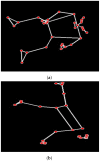
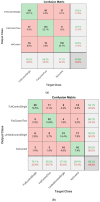
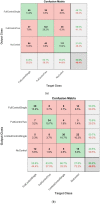
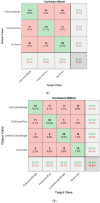
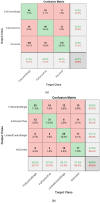
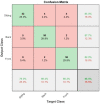
Similar articles
-
Enhanced Infant Movement Analysis Using Transformer-Based Fusion of Diverse Video Features for Neurodevelopmental Monitoring.Sensors (Basel). 2024 Oct 14;24(20):6619. doi: 10.3390/s24206619. Sensors (Basel). 2024. PMID: 39460099 Free PMC article.
-
Automatic Posture and Movement Tracking of Infants with Wearable Movement Sensors.Sci Rep. 2020 Jan 13;10(1):169. doi: 10.1038/s41598-019-56862-5. Sci Rep. 2020. PMID: 31932616 Free PMC article.
-
Parent-recorded videos of infant spontaneous movement: Comparisons at 3-4 months and relationships with 2-year developmental outcomes in extremely preterm, extremely low birthweight and term-born infants.Paediatr Perinat Epidemiol. 2022 Sep;36(5):673-682. doi: 10.1111/ppe.12867. Epub 2022 Feb 16. Paediatr Perinat Epidemiol. 2022. PMID: 35172019
-
Neonatal interventions for preventing cerebral palsy: an overview of Cochrane Systematic Reviews.Cochrane Database Syst Rev. 2018 Jun 20;6(6):CD012409. doi: 10.1002/14651858.CD012409.pub2. Cochrane Database Syst Rev. 2018. PMID: 29926474 Free PMC article.
-
[The assessment of general movements: a reliable tool for predicting the neurodevelopment of preterm infants in an very early phase].Zhongguo Dang Dai Er Ke Za Zhi. 2013 Apr;15(4):317-20. Zhongguo Dang Dai Er Ke Za Zhi. 2013. PMID: 23607961 Review. Chinese.
Cited by
-
Correlation between pose estimation features regarding movements towards the midline in early infancy.PLoS One. 2024 Feb 28;19(2):e0299758. doi: 10.1371/journal.pone.0299758. eCollection 2024. PLoS One. 2024. PMID: 38416738 Free PMC article.
-
Enhanced Infant Movement Analysis Using Transformer-Based Fusion of Diverse Video Features for Neurodevelopmental Monitoring.Sensors (Basel). 2024 Oct 14;24(20):6619. doi: 10.3390/s24206619. Sensors (Basel). 2024. PMID: 39460099 Free PMC article.
References
-
- Weyandt L.L., Clarkin C.M., Holding E.Z., May S.E., Marraccini M.E., Gudmundsdottir B.G., Shepard E., Thompson L. Neuroplasticity in children and adolescents in response to treatment intervention: A systematic review of the literature. Clin. Transl. Neurosci. 2020;4:21. doi: 10.1177/2514183X20974231. - DOI
MeSH terms
LinkOut - more resources
Full Text Sources

